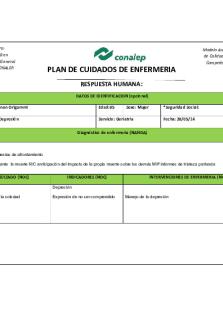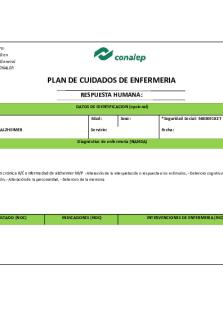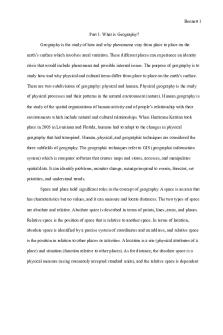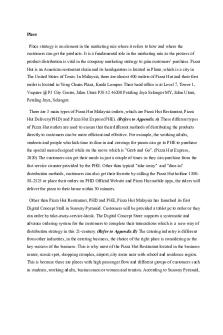BUS 120 TBSL Place Case PDF

| Title | BUS 120 TBSL Place Case |
|---|---|
| Author | Mitchell McGregor |
| Course | Essentials of Marketing |
| Institution | University of the Fraser Valley |
| Pages | 6 |
| File Size | 172.4 KB |
| File Type | |
| Total Downloads | 67 |
| Total Views | 142 |
Summary
Harleen Kaur as Prof....
Description
Running Case This Bar Saves Lives: Place Strategy for Growth
A Growing Concern The TBSL team was conducting a review of their marketing strategy and had just concluded the assessment of their product strategy. In all, the team was relatively satisfied with the product decisions they had made to this point, but now the team would spend the next two weeks reviewing the place strategy for TBSL. It was not something most of the team was looking forward to because there were two different viewpoints expressed every time the team met to discuss place strategy. Everyone agreed TBSL wanted and needed to grow, but there was no consensus about how to grow. The team was divided into two camps. One camp believed that TBSL's place strategy should be to try to get as many bars in as many reasonable retail outlets as possible and the bigger the better. The more places TBSL were sold, the higher the probability that more potential customers would see the brand and then have a chance to purchase. This group wanted to pursue an intensive place strategy. The other camp argued that TBSL should target its retail outlets selectively. By being more selective, TBSL could make sure it was associated only with retailers that had a similar, premium, high-end brand image. Customers shopping in such stores were also more representative of the core TBSL buyer. In addition, because this strategy would mean fewer overall retailers, TBSL could better focus its marketing resources on just these retailers. The two camps made their points, but also saw merit in the other side's perspective, so it would take all of the two weeks to decide what to do. Part of the reason for the team's split on place strategy was inherent to a startup company. In its early days, TBSL secured shelf space for its bars with Bristol Farms. Bristol Farms was an upscale grocery chain that operated 12 stores in the Los Angeles area. Bristol Farms fit well with TBSL's mission to provide high-quality, fresh food while being responsible and committed to the community and environment. TBSL felt the match was perfect, and Ryan had a photo made holding up a TBSL bar in front of a Bristol Farms store to show they had finally made it into retail. The team felt that Bristol Farms would be a springboard for adding other retailers to the distribution network. However, it didn't work out that way. Just 6 months after TBSL bars first appeared on shelves at Bristol Farms, Bristol Farms dropped TBSL because the bars weren't selling. The team was hugely disappointed when they heard the bad news from Bristol Farms. They knew that the bars tasted good, and once people tried them, they bought them. How was it possible that the bars wouldn't sell in an upscale retailer like Bristol Farms? The customers matched the TBSL target market profile, the placement on the shelves was good, and the retailer seemed excited about the bars. Yet, the sales didn't come. Upon reflection, the team realized that the bars don't sell themselves no matter how good they taste, and no matter how noble the cause they support. TBSL needed to support the retailer. Subsequent agreements with retailers included a plan for supporting the retailer through product demonstrations, instore signage, on-shelf displays, and other marketing support. The team knew it was particularly effective to go to stores, talk to the staff about the mission, have them try the
bars, and then follow up with customers as they shopped so they could try the bars and learn about TBSL and its mission. The clear downside to this support was that it was timeconsuming and expensive. To fully support a retailer, TBSL needed to provide signage and display materials at a minimum, but anything on site at the retailer also required either hiring a company to promote and give out samples or someone from the team needed to be there. The on-site promotions were extremely effective but stretched thin both TBSL's financial and personnel resources.
Growth Options The tradeoffs between the more effective on-site support and the somewhat less effective signage and display materials was at the root of the debate about place strategy. Everyone knew that it was more feasible to support a smaller chain fully. In fact, this was becoming more and more of a concern as TBSL added more retailers, and especially when adding more retail outlets from bigger retailers. Whole Foods, Starbucks, and Target were all huge retailers TBSL considered critical to their long-term success since these were three of the largest bar retailers. However, TBSL supplied bars to only a relatively small percentage of the total number of stores for any of these larger retailers. With every new retail chain TBSL found it more difficult to go to the locations to really have the impact they wanted when they were on site in support of a store. The group debated three primary possibilities. They could continue to grow by adding new retailers that had a reasonable fit with their brand image and mission, but most would receive only minimal on-site support or none at all, if TBSL did not think the potential sales justified the expense. As another option, TBSL could limit growth by not pursuing additional retailers, but instead increasing the number of stores TBSL sold through, especially among the larger retailers like Target and Starbucks. This option meant TBSL would offer some on-site support to a select few new stores once they started carrying TBSL bars, but most new stores, and all existing stores that carried TBSL already, would get only signage and display support. The final possibility was more radical. TBSL could reduce the number of retailers to those with the most potential and best fit, dropping the others, to focus more on-site support to more of the stores in the remaining chains. This would also allow TBSL to reinforce their presence with existing stores in the chain periodically. Admittedly, dropping existing retailers seemed difficult to do, especially since they had worked as hard as they had to get these retailers to offer their bars in the first place. Target was the most hotly debated retailer in this option because it had huge potential, but also probably fit the brand the least well. While not a discount store, Target shoppers clearly considered price to be more critical to bar purchases than those at Starbucks, Whole Foods, or Dunn Brothers Coffee. This was reflected in the assortment at Target as well as the pricing. The options all had advantages and disadvantages. Which made more sense? Was the on-site support really necessary, and how critical was it to long-term sales? If TBSL kept its current retailers, but only offered on-site support to a select few of the new outlets as the retailer added TBSL to the stores, would this be enough, or would it risk retailers dropping out as Bristol Farms had done if they feel they are not getting adequate support but other retailers are? If TBSL decided to be more selective, which retailers should it stay with and which should it drop? The team felt like they were at somewhat of a crossroads. Should they try to focus more effort on one specific place outlet, and if so, which one should get more attention? Should they continue to expand to any retailer that would sell their bars or should they be more
selective? What were the potential long-term consequences of these decisions? The group knew their decision would likely have an impact not only on the immediate emphasis within their place decisions, but would also potentially have longer-term effects that they could not foresee. It was going to be an important next few weeks.
Questions 1. Are all the channel options consistent with TBSL's premium, high-end positioning? (2) No, the channel options aren’t all consistent with TBSL’s premium, highend positioning. The first channel option would be good as they can decide on which retailers have a reasonable fit for their brand image and mission, and the second option would provide consistency with the retailers already selected by TBSL’s high-end positioning, although, it would be in their best interest to re-evaluate which retailers they have existing connections with best fit TBSL’s brand. Their third, more radical option of dropping other retailers and focusing solely on selling in Target would fit their brand the least well, as Target is not a great store to sell in to communicate a high-end, premium brand. Target shoppers consider price more critical than other locations, and a high-end positioning strategy would make TBSL stick out as “overpriced” in a store like target. 2. What role does Target play in TBSL's place strategy? (1) Target is one of the three largest bar retailers, alongside Whole Foods and Starbucks. Since it has such a large outreach, Target has huge potential, but also fits TBSL’s brand the least well. Since Target’s shoppers consider price to be more critical, and that TBSL’s brand is revolved around a high-end positioning, the bar will be less likely to be purchased by an average customer with no on-site support. 3. Could TBSL be successful without Target? Why or why not? (3) Yes, TBSL can still be successful without Target. Whole Foods and Starbucks, the two other largest bar selling retailers, still provide a significant outreach to consumers that are likely to be purchasing bars, and they both fit the brand image of TBSL very well, while Target’s consumers aren’t likely to coincide well with a highly positioned brand image that TBSL is likely to be using. TBSL is still an up and coming product, and it is essential to communicate the brand image effectively so as to not confuse the consumer, so being placed in stores more in line with the brand of TBSL is much more important in this phase of the product’s life cycle.
4. Given the pros and cons of each channel option, should TBSL consider pursuing additional channel options or not? Explain. (3) Right now, it would be best for TBSL to refrain from pursuing additional channel options, and to focus on advertising efforts through its best selective channel option. Since TBSL is in the introduction stage of the product life cycle, costs are meant to be high, and there isn’t meant to be a profit right away. This is why TBSL should focus on sticking with retailers that fit their brand value, and instead of expanding to more stores, they need to focus on aggressively marketing the product, to get consumers seeing and talking about the product more and more. This would mean more focus on on-sitesupport to further help with getting the product in the minds of the consumer. In order to be able to do this, I believe TBSL should stick to selling in the most popular and visited stores in retailers that they have already connected with, namely, Starbucks and Whole Foods, as they fit their brand image well. 5. Should TBSL try to secure additional smaller boutique coffee chains like Dunn Brothers Coffee or should it focus on further penetration in Starbucks? Explain. (3) Being this early on in the product life cycle, TBSL should focus on further penetration in Starbucks over securing a smaller boutique coffee chain. It is imperative to market heavily in this stage of the products introduction, and in order to be a success later on, efforts must be made to penetrate and get a good share in the best market to sell the bars in. This means that profits will benefit overtime, especially with extra marketing efforts being put in early on to communicate the brand to consumers. Case - Application Exercise- Assignment (8) The place decision is an important part of the marketing strategy. Where your product is sold influences not just which customers will potentially see or buy your product but also customer perceptions of your brand through association with the place outlets. For this application exercise, you get to make place recommendations for TBSL. Specifically, your task is to provide suggestions and justification for additional local place options for TBSL that fit TBSL's marketing strategy. Do the following: 1. Make a list of local retailers that you think match TBSL's premium, high-end positioning. For this initial list, ignore the fact that TBSL makes snack bars. Make sure you include some non-grocery retailers or locations in your list. For example, would gyms, health clubs, coffee shops, bakeries, health food stores, or markets be appropriate brand image matches?
Nature’s Fare
Sippchai Cafe
Steve Nash Gym
Sprouted Oven Cafe
Cabela’s
Atmosphere
2. Now, take your initial list and think about whether or not the retailer might consider TBSL bars to be a good fit to sell in its location. Mark out those that would not be likely candidates to sell TBSL bars.
Nature’s Fare
Sippchai Café
Atmosphere
Steve Nash Gym
Sprouted Oven Cafe
Cabela’s
3. From the remaining list of potential place outlets for TBSL bar sales, rank order the outlets based on which you think would offer the best opportunity for TBSL. 1. Nature’s Fare 2. Sippchai Café 3. Steve Nash Gym 4. Sprouted Oven Cafe 4. For the top option on your recommended list, list three reasons why it would be a good fit for TBSL. Then list two possible reasons it might not consider selling TBSL bars and how TBSL might address these reasons. Now what advice would you give TBSL?
3 reasons why Nature’s Fare would be a good fit for TBSL:
It fits TBSL’s high-end brand positioning well It is a chain with multiple stores, meaning more consumer outreach with product placement over multiple locations Is a grocery store that can incorporate personal selling very well
2 possible reasons why Nature’s Fare might not consider selling TBSL bars (and how to address these reasons)
Nature’s Fare is heavily involved with providing organic and sustainable foods, and may be skeptical of TBSL bars being aligned with that
o
TBSL can further advertise the sustainability of their product with in person selling, or repurposing their packaging to focus on that aspect stronger
Nature’s Fare has a large focus on health benefits too, and may be worried about TBSL bars not proving to be healthy enough for customers o TBSL could further advertise the health benefits of their product on the packaging, and with in person selling.
Advice I would give TBSL: I believe that you need to heavily focus on marketing. You are in the introduction phase of your product, and need to put in the money and effort to get this product known to consumers as fast and as best as possible. I recommend sticking with retailers that fit your brand image, and spending some cash and resources on having good in person sellers be present at the store to get in the mind of the consumer. It will hurt profits initially, but that is normal in the introduction stage. It will benefit you in the long run....
Similar Free PDFs

BUS 120 TBSL Place Case
- 6 Pages

Bus 120 Midterm 2 Notes
- 36 Pages

BUS 120 Quiz 2 - Answers on quiz
- 1 Pages

BUS 400 - Case Disney
- 1 Pages

BUS 1038 - Case Study 1
- 14 Pages

BUS 307- Case Study 1
- 7 Pages

BUS-206 Case Study One
- 6 Pages

Depresion - PLACE
- 3 Pages

Asma - PLACE
- 2 Pages

Alzheimer - PLACE
- 4 Pages

Geography/Place
- 3 Pages

Nutrition 120
- 64 Pages

Case Study on BP (BUS 251)
- 7 Pages
Popular Institutions
- Tinajero National High School - Annex
- Politeknik Caltex Riau
- Yokohama City University
- SGT University
- University of Al-Qadisiyah
- Divine Word College of Vigan
- Techniek College Rotterdam
- Universidade de Santiago
- Universiti Teknologi MARA Cawangan Johor Kampus Pasir Gudang
- Poltekkes Kemenkes Yogyakarta
- Baguio City National High School
- Colegio san marcos
- preparatoria uno
- Centro de Bachillerato Tecnológico Industrial y de Servicios No. 107
- Dalian Maritime University
- Quang Trung Secondary School
- Colegio Tecnológico en Informática
- Corporación Regional de Educación Superior
- Grupo CEDVA
- Dar Al Uloom University
- Centro de Estudios Preuniversitarios de la Universidad Nacional de Ingeniería
- 上智大学
- Aakash International School, Nuna Majara
- San Felipe Neri Catholic School
- Kang Chiao International School - New Taipei City
- Misamis Occidental National High School
- Institución Educativa Escuela Normal Juan Ladrilleros
- Kolehiyo ng Pantukan
- Batanes State College
- Instituto Continental
- Sekolah Menengah Kejuruan Kesehatan Kaltara (Tarakan)
- Colegio de La Inmaculada Concepcion - Cebu


